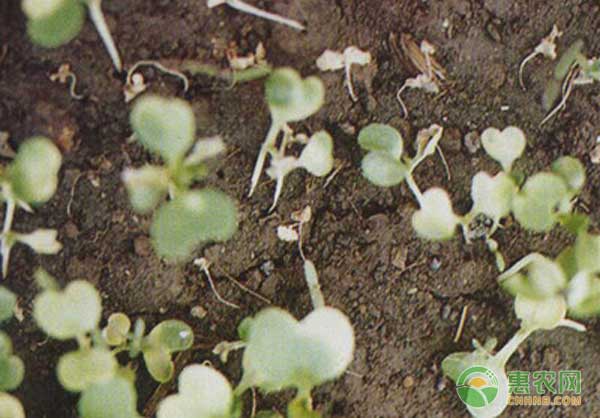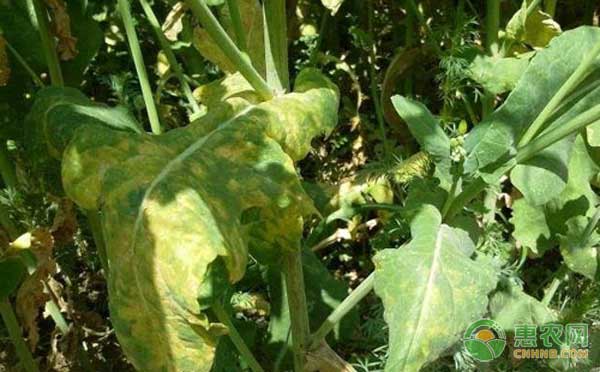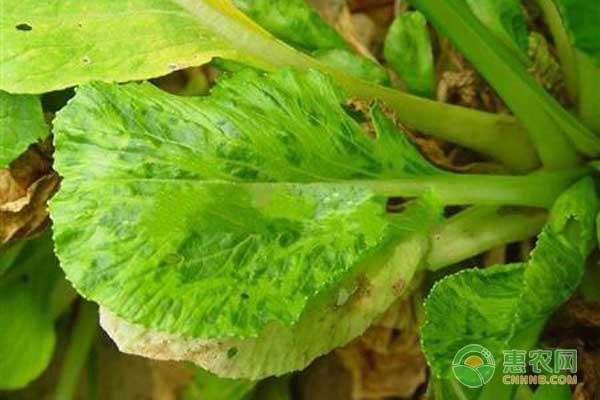Because rapeseed has a long growth period, it is easy to be attacked and infected by various diseases. The main diseases of rapeseed in China are sclerotinia, viral disease, white rust, downy mildew, stagnation, etc. Among them, sclerotinia is the most widespread. The degree is the most serious. Let's talk about the control methods of rapeseed diseases. First, sclerotinia Sclerotinia sclerotiorum is also known as sclerotia soft rot and stem rot. Farmers also call white rods, hemp rods, and mold mites. It is the most harmful fungal disease in rapeseed production in China. The incidence rate is 10%~30% in general years and over 80% in special years. After the rapeseed is susceptible, the number of kernels in rapeseed is significantly reduced, and the weight of 1000-grain weight is reduced. Generally, the yield can be reduced by 10% to 30%, and the yield in severely ill areas can be reduced by more than 30%. Incidence characteristics Young leaves, leaves, stems, petals, pods and seeds of rapeseed can be infected, and the disease can occur in the whole growth period, especially in the flowering stage. In the early stage, the petiole of the base is infringed, and the diseased leaves first appear round water-stained disease. After the spot, it turns blue-brown and has white rot fungus; the diseased stem turns to pale gray after the initial appearance of light brown water-stained lesions. When high temperature, the surface of the soft rot has white mold, and the skin ruptures after drying, such as hemp The inside of the stem is destroyed and rotted into a hollow, and the white mold and the black rat fecal matter are caused to cause branching or whole plant death; after the pod is damaged, the white seed is thin and thin, and the yield and oil content are reduced; when the rape is over the prosperous The disease is aggravated when lodging and when the climate is hot and humid. Control method Agricultural control: 1 seed cleaning. Drying before sowing can achieve the effect of killing the nucleus, but not exposure. After the sclerotia is initially picked, 0.5-0.75Kg of salt or 0.5-1Kg of ammonium sulfate is added to 5Kg of water to select the seed, and the floating sputum and sclerotia are removed, rinsed with water and then sown. 2 Implement a rotation for cleaning the pastoral. The seedbed is not allowed to repeat. After the rapeseed is harvested, the diseased bodies in the fields, roadsides, and off-sites will be completely removed and concentrated. If used as compost, it must be fermented at high temperature. The straw slag cannot be directly applied to the field for fertilizer. It is best to implement water and drought rotation in Daejeon, and dryland rapeseed should be applied to winter crops such as wheat as much as possible. 3 Strengthen field management. Pay attention to ditch drainage to ensure that the rain stays in the field; reasonable close planting reduces the concealment and lodging in the field; pay attention to the application of base fertilizer to increase the application of phosphorus and potassium fertilizer to apply fertilizer early, avoid excessive application of nitrogen fertilizer during the flowering period; do a good job in cultivating soil and timely remove disease, yellow and old leaves Then, take out the field to reduce the spread of pathogens. Chemical control: in the field of rapeseed from the beginning of flowering to the flowering stage, the incidence of plant leaves reached 10%, and when the stem incidence rate reached 1%, it was necessary to spray and prevent the spraying, and 50% of carbendazim WP 2-3 could be used per mu. Or 40% sclerotium net 2-3 two with water 100 kg evenly sprayed. The focus of spraying should be on the middle and lower stems and leaves of the plant and on the ground. The susceptible varieties and the overgrown fields should be treated once every 7-10 days to improve the control effect. The effect of pesticide rotation is better. In the production, the spraying of pesticides is usually started once a week after the initial flowering of rapeseed, and once again during the flowering period. Second, the disease Symptoms The rapeseed was not infected before it was unearthed, causing rotten seeds to not germinate. The seedlings of the seedlings are water-stained, pale green to yellowish green. At the end of the disease, the diseased department contracted, the tissue rotted, collapsed or sag, causing the seedlings to suddenly fall to the ground. Due to the rapid development of the disease, the roots and stems have dried up when the seedlings have not wilted. When the seedlings fall to the ground, the surface of the leaves is green. At the beginning, only a single onset, after 3-5 days, can be comprehensively ill, infecting large pieces of seedlings and dying. The diseased seedlings quickly collapsed, and those who are sick can continue to grow. When the humidity is high, the surface of the diseased body grows white hairy mold. Incidence condition The optimal temperature for the onset is 24-26 ° C. The seedlings are too dense, the light is insufficient, the ventilation is poor, and the humidity is too high. Control methods: combination of agricultural control and chemical control. 1. Soil treatment: use 70 kg of 70% methyl thiophanate per acre and mix 20 kg of fine soil. After the soil preparation, evenly spread the soil surface and sow; if small area nursery can use 50% carbendazim or 70% thiophanate per square 8-10 grams of rice, 50% dikesone 8 grams per square meter mixed with 20 times fine soil, 1/3 of the soil is sprinkled on the seedbed before sowing, and the remaining 2/3 of the soil is planted after sowing. Cover evenly on the seeds. The application method of the underpad cover is particularly effective for the prevention and treatment of squatting. 2. Seed treatment: The seeds were sunbathed one day before planting, and then sown with 0.3% zinc fertilizer at 0.3% of the seed weight. At the same time, 50 kg of lime can be applied per mu of nursery land to increase the pH value of the soil, and the disease also has a certain control effect. 3. Chemical control: In addition to the timely removal of the diseased seedlings, the copper ammonium mixture can be sprayed. The formula is 2 parts of copper sulfate, 11 parts of ammonium carbonate, and then thoroughly stirred, and then sealed in a plastic bag for 24 hours. When using, take 1 part of the powder and 400 parts of water to dissolve and spray. It is better to spray once every 7-10 days for 2 times. After the onset, the following agents can be sprayed and controlled: 75% chlorothalonil wettable powder 1000 times solution, or 50% carbendazim wettable powder 800 times solution or 70% tobuzin wettable powder 1000 times solution or 30% fungicide Wet powder 800 times liquid or 64% anti-virus hydrating powder 600-800 times liquid. 4, field management: reasonable dense planting, timely drainage, drainage, reduce field humidity, prevent moisture retention. Third, downy mildew Symptoms It can occur from the seedling stage to the adult stage, and the most important feature is the production of the downy mildew layer at the site of the disease. Can damage leaves, stems, flowers, and pods. The blade is damaged. First, there is a light green small shift on the front of the leaf. When the air is wet, a layer of downy mildew grows on the back of the lesion. The disease usually begins with the basal leaves and gradually spreads upwards. In severe cases, the whole plant is yellow and eventually withered. After the peduncle is damaged, it becomes fat and swollen, resembling a "faucet crutches", with a smooth surface and a frosty mildew layer. Condition The most suitable temperature for the onset is 16-20 ° C, high humidity is conducive to the formation and germination of pathogens. The Yangtze River Basin is warm in the spring, with more rainy days, large temperature difference between day and night, and heavy dew is conducive to disease prevalence. Premature temperature in sowing is not conducive to the growth and development of rapeseed, but also conducive to disease occurrence. Prevention period At the beginning of the disease, when there is a hoarfrost-like mold on the leaves, a general survey is carried out; when the rate of leaf disease in the convulsion or flowering period reaches 10%, spraying begins. Control method High-yield and disease-resistant varieties; generally, Brassica napus is more resistant to disease than cabbage. Strengthen cultivation management. Deep ditch high-cabin cultivation, to prevent water accumulation, reduce field humidity; and time seedlings, ventilation and light; remove diseased seedlings; remove diseased leaves, old leaves, yellow leaves during the flowering period; timely reduce the "faucet" in a timely manner, concentrated burning. Chemical control. During the fifth to seventh leaf stage of rapeseed, control with 70% propionate zinc 700 times solution or 30% pyrimethanil carbendazim 800 times solution, once again at intervals of 10 days, combined with control of aphids according to the incidence of downy mildew at the initial flowering and final flowering stage Spraying with 10% chlorothalonil 500 times solution can effectively control the damage of rapeseed downy mildew. Fourth, viral disease Viral disease is a viral disease caused by aphid transmission. There are all diseases in the country. The incidence rate in the general year is about 10%, and the serious years are more than 50%. Generally, the yield is reduced by 10%~30%, and the quality of cakes and oils is reduced. Incidence condition The primary infestation source is mainly Chinese cabbage, radish, red cabbage and other cruciferous vegetables and Solanaceae, Cucurbitaceae and other plants. The mode of transmission is that the mites suck the sap of the diseased plants and then suck them on the healthy plants. Juice, sap contact between the otherwise damaged diseased plant and the healthy plant can also cause poisoning. Symptoms The cabbage seedlings are infected with virus at the seedling stage. The leaves are formed with dead leaves, the veins gradually darken and die, and the leaves are further shrunk and shedding. The two are the emergence of mosaics; the three are yellow-brown lesions formed by the leaves, which shrink and harden. Become a stiff leaf, and the plants in the seedling stage die before and after convulsions. Hazard: brown and black long-shaped lesions on the main stem and branches of the cabbage-like rapeseed, or ring-shaped lesions, which can cause convulsions, but become shorter, less flowering, and pods Most of them are deformed and have fewer seeds, and the plants with heavy disease are dead. Control method 1 Adjust the sowing date: According to the forecast of rainfall in the current year, the sowing period should be determined. Rain and drought should be moderately delayed, and the rainy year can be broadcast early. 2 Rapeseed fields are as far away as possible from cruciferous vegetables. 3 Destroy the diseased plants: Always check the incidence of the disease in the field. If a small number of diseased plants are found, they should be destroyed in time. The destroyed plants should be buried or moved away from the rape fields. 4 timely drought resistance: If the drought occurs in the seedling stage, it should be timely watered, creating a field microclimate that is conducive to the robust development of rapeseed and not conducive to the transmission of aphid hosts. 5 Field flood control: planting high-stalk crops around the seedbed can prevent the locusts from moving to poison; use yellow boards to induce cockroaches, use locusts to attract yellow stagnation, and focus on summer weeds and early-cropped cruciferous vegetables. On the prevention of the virus to the rape; rape 3-6 leaf stage treatment is very important, 10% imidacloprid 20g per acre, or 4.5% beta-cypermethrin 30ml, or 3% acetamiprid EC 40-50ml , or 50% anti-Converse WP 1-10 grams, or 2.5% Kung Fu emulsifiable oil 10-20 ml, etc. 6 In the initial stage of viral disease, spray 10% virus Wang WP 500 times or 1.5% phytopathogenic emulsion 1000 times, and control once every 10 days, continuous control 2-3 times. The various diseases of rapeseed have a great impact on the yield. If farmers can understand the symptoms of the main diseases of rapeseed and their control techniques, it can reduce the harm, increase the yield and improve the economic benefits. -Operation system: windows XP(Best) or windows 7 Ultrasound Box,BW ultrasound scanner,ultrasound box,black and white ultrasound box,ultrasound scanner Guangzhou Sonostar Technologies Co., Limited , https://www.sonoeye.com



-D-Maximum Scanning Depth: max. 250mm
-Multi-frequency: 5 segment frequencies
-Zoom: 10 ratio, 1.5, 2.0, 2.5, 3.0, 3.5, 4.0, 4.5, 5.0, 5.5, 6.0
-Image gray scale: 256 level gray scale
-Cine Loop::max. 1024 frames
-Scann mode: B, 2B, B/M, M, 4B, 9B, ZOOM(Real-time zoom on B mode)
-Image processing: Pre-processing, after-processing, dynamic range, frame rate, line average, edge;
enhancement, Black/White inversion; Gray scale adjustment, contrast, brightness, γ revision.
-Measurement and calculation(human):
B mode: distance, circumstance, area, volume, angle, ratio, stenosis, profile, histogram;
M mode: heart rate, time, distance, slope and stenosis;
Gynecology measurement: Uterus, cervix, endometrium, L/R ovary;
Obstetric: gestation age, fetal weight, AFI;
Cardiology: LV, LV function, LVPW, RVAWT;
Urology: transition zone volume, bladder volume, RUV, prostate, kidney;
Small parts: optic, thyroid, jaw and face.
-Measurement and calculation(veterinary): Cattle: BPD, CRL, TD;
Horse: GA; Dog: GS; Cat: HD, BD; Sheep: BPD, CRL, TD
-Image store: by computer hardisk or USB disk
-Print: by USB laser/inkjet printers with computer
-DICOM3.0, medical digital imaging and communication
-3D image function(function): can get rebuilt 3D image by any probe
What are the main diseases of rapeseed? How to prevent rape disease?